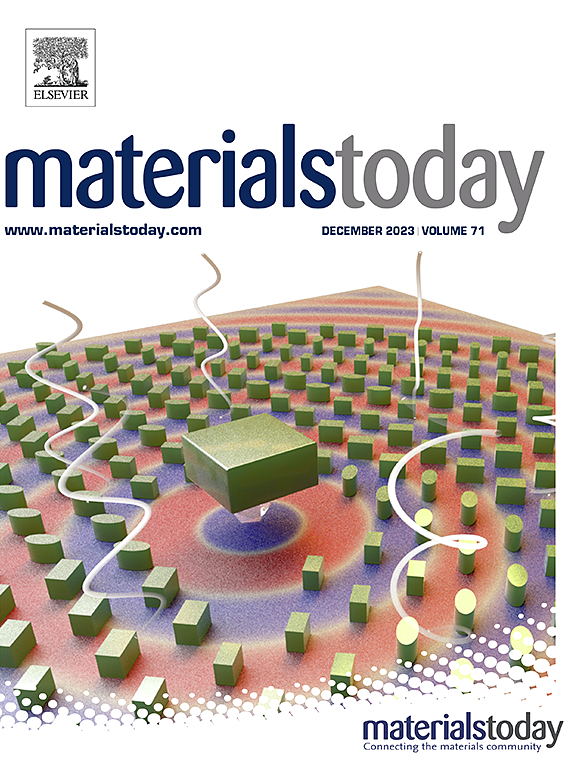Wrinkle formation in synthesized graphene and 2D materials
IF 21.1
1区 材料科学
Q1 MATERIALS SCIENCE, MULTIDISCIPLINARY
引用次数: 0
Abstract
Chemical vapor deposition (CVD) is widely used to produce high-quality, large-area graphene and two-dimensional (2D) materials at low cost, making them suitable for a wide range of applications in mechanical, electronic and photonic devices due to their unique physical properties. However, wrinkles always form when the as-grown materials on the substrate cool from the growth temperature to room temperature because of the difference in the coefficient of thermal expansion (CTE) between the materials and the substrates, significantly degrading device performance. In this review, we first discuss several typical surface corrugations of graphene and 2D materials that are commonly observed on a substrate, including minor, standing, contacted and lying wrinkles, as well as wrinkle networks. We then introduce a criterion to ascertain the wrinkle-free state by equating the total compressive strain obtained from CTE mismatch to the sum of the strain released by the wrinkles and the residual strain, which can be deduced from the morphology of wrinkles and Raman spectroscopy, respectively. Based on this criterion, we review several notable endeavors in the synthesis of wrinkle-free graphene and finally answer the question of where the lost compressive strain goes. We aim that this review provides readers with a thorough understanding of the mechanism underlying wrinkle formation and stimulates further exploration into the synthesis of wrinkle-free 2D materials.

求助全文
约1分钟内获得全文
求助全文
来源期刊

Materials Today
工程技术-材料科学:综合
CiteScore
36.30
自引率
1.20%
发文量
237
审稿时长
23 days
期刊介绍:
Materials Today is the leading journal in the Materials Today family, focusing on the latest and most impactful work in the materials science community. With a reputation for excellence in news and reviews, the journal has now expanded its coverage to include original research and aims to be at the forefront of the field.
We welcome comprehensive articles, short communications, and review articles from established leaders in the rapidly evolving fields of materials science and related disciplines. We strive to provide authors with rigorous peer review, fast publication, and maximum exposure for their work. While we only accept the most significant manuscripts, our speedy evaluation process ensures that there are no unnecessary publication delays.
 求助内容:
求助内容: 应助结果提醒方式:
应助结果提醒方式:


